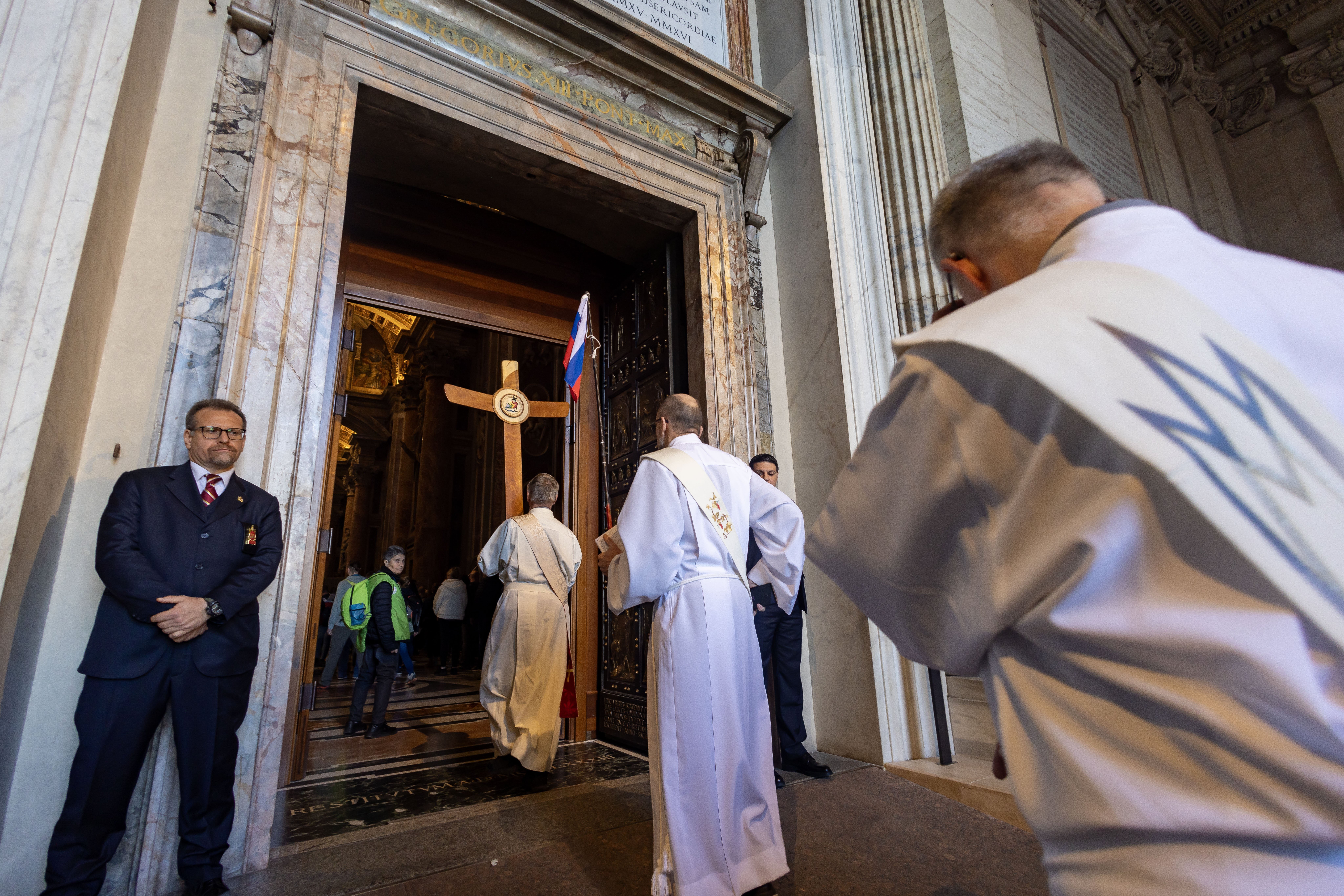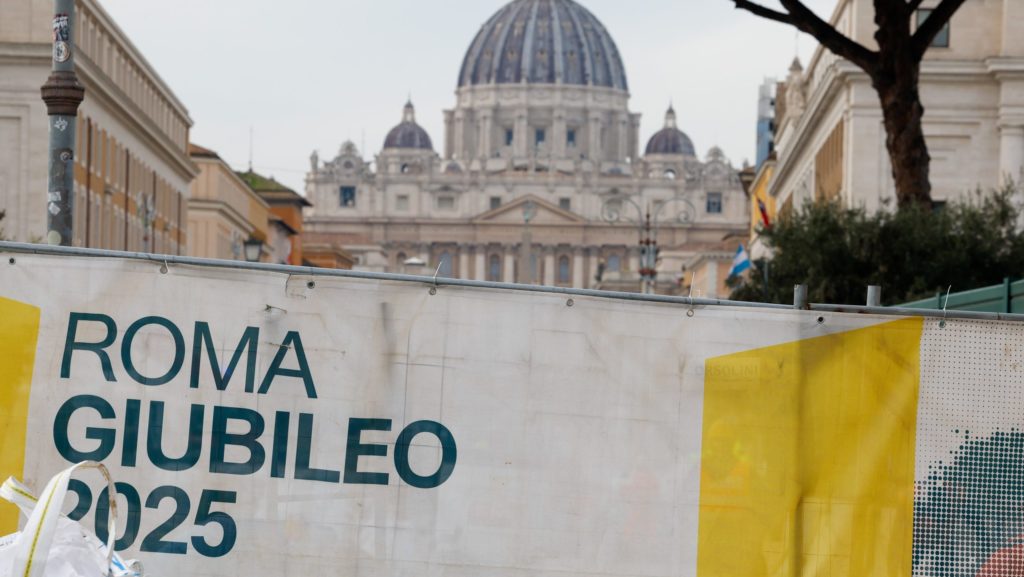ROME — When it comes to the much-hyped Jubilee Year of 2025, the raw truth of the matter is that many Roman hotel owners, apartment renters, restauranteurs, and cab drivers today find themselves asking some version of the following question: “If a jubilee year fell upon Rome but no one was there to see or hear it, is it actually happening?”
The depressing headline of one recent piece on the Italian website “L’agenzia di viaggi” (“Travel Agency”) sums up the verdict in some circles so far: “Jubilee: High prices, a flop for hotels and short-term rentals.”
At the three-month mark of a yearlong cycle of celebrations and events, the consensus in Rome is that despite a handful of magic moments for some groups, the expected surge in pilgrimage and tourist traffic has not occurred, and a hoped-for “jubilee boost” to the Roman economy may never materialize.
On the other hand, Romans have nonetheless been pleasantly surprised by the fact that many of the promised public works for the Jubilee have been finished more or less on time and on budget, an accomplishment that’s reflecting well on the administration of Mayor Roberto Gualtieri.
In fact, to the extent there’s a hero to the jubilee story so far, the 58-year-old Gualtieri, and not the 88-year-old Pope Francis, might be the candidate of choice for people who actually live in the Eternal City.
Francis to date largely has been the missing man of the Jubilee, though of course through no fault of his own. His 38-day stay at Rome’s Gemelli Hospital battling double pneumonia meant that he missed all Jubilee events over that span, in addition to his usual weekly public appearances.
Even now that Francis is safely back in the Vatican, he’s following doctors’ orders to undergo a two-month convalescence, meaning he may be functionally invisible to Jubilee visitors at least until June.
Granted, that leaves half the year for a “jubilee rebound,” and it was always expected that a disproportionate share of the surge in visitors would come during the warm-weather months of the summer and early fall in Rome.
To date, however, things appear grim for the class of Roman entrepreneurs who were hoping to cash in on the experience.
A recent survey by SoloAffiti, a consulting firm that serves the hotel and short-term rental industry in Italy, found that during the first two months of the Jubilee, meaning January and February, there was no boom in occupancy rates with respect to the same period in 2024.
In fact, according to the survey, because the supply of short-term rentals and hotel beds had been increased in expectation of extra demand, occupancy rates actually fell to 70%, which is an eight percent decrease from 2024. The survey found that almost 18% of rental owners who previously offered their properties on a long-term basis decided this year to shift to short-term rentals in expectation of Jubilee-related occupancies, thereby significantly increasing the available spaces.

Part of the decrease may also be linked to a jump in rental charges for 2025, also linked to the expectation of greater demand, said Silvia Spronelli, the CEO of SoloAffiti.
“The first months of the Holy Year have seen a result in terms of bookings lower than expected, even if it is still early to make a real assessment,” Spronelli said. One of the reasons, she said, may be that pilgrims tend to “choose cheaper accommodation or religious structures, reducing the impact of the Jubilee on traditional tourist rentals.”
The net effect of the mismatch between supply and demand has been to drive rental charges ever higher, with the average rental charge in the city of Rome up 13% from 2024. The highest prices predictably come in the city center, where a two-bedroom space is now running around $1,200 a month and a three-bedroom at $1,500.
A similar study by the Italian commercial group Confocommercio found similar results for restaurants and shops in Rome, citing a 20% drop in total billing over the same period in 2024. A report on Radio Roma summarized the findings as, “Empty restaurants, half-deserted shops and a collapse in cruise-ship tourism: Expectations have not been met.”
Other analysts confirm the Jubilee is having an overall negative effect on traditional tourism in Rome, drawn not primarily by religious motives but diversions such as art, culture, and shopping. The head of an agency that provides private cars and drivers for higher-end tourists, for example, told Crux that many of his clients have decided to skip 2025 for their visits to Rome, out of fear of Jubilee crowds.
On the positive side of the ledger, many Romans have been taken aback by the fact that a whole series of civic improvements promised by the city in the run-up to the Jubilee have more or less actually been delivered. Overall, according to a recent report by a city official, 43 worksites opened for the Jubilee have been completed on schedule, coming in under budget at $1 billion spent of the $1.1 billion allocated.
Other worksites that remain open, according to this official, represent projects that were always projected to be completed within 2025-26, for a total expense of an additional $750 million.
As one Italian newspaper recently put it, Gualtieri so far seems about the lone public figure to be reaping a “jubilee boost” in terms of his public standing. On the other hand, not everyone is singing hosannas: In a January broadcast, Italian journalist Laura Tecce complained of “delays and errors” in public works and predicted it would take 20 years to see if the Jubilee actually had a positive effect on the city.
None of this grumbling, of course, necessarily reaches the pilgrims who actually do make it to Rome for some piece of the Jubilee experience.
For instance, some 4,000 deacons from around the world recently converged on the city to celebrate the Feb. 21-23 Jubilee of Deacons, and to hear them tell it, it was a memorable experience, made all the more so by the coincidence of being present while the pope was suffering.
In an interview with EWTN’s “News Nightly,” Deacon Ron Joseph from the Diocese of Columbus, Ohio, summed it up by explaining how the experience made him contemplate the role Francis has had in his own diaconate.
“I remember that in one of his very first interviews he talked about the Church being like a ‘field hospital,’ like a M.A.S.H. unit,” Joseph said. “We don’t ask someone who’s coming from battle about their blood sugar or their cholesterol, we try to heal their wounds.”
“That’s had a profound effect on my ministry as a deacon,” he said. “We need to meet people where they are and offer the mercy and the hope that Jesus Christ offers. When you think about it, the two Jubilee years [Pope Francis] has been part of are the Year of Mercy and the Year of Hope. I think there’s something profound about that.”
For pilgrims such as Joseph, low turnout, high prices and disappointing sales probably all pale in comparison to the deeper meaning of his Jubilee experience. For the Romans who will remain long after he’s back in Columbus, however, those realities nevertheless are an inevitable part of the picture.

